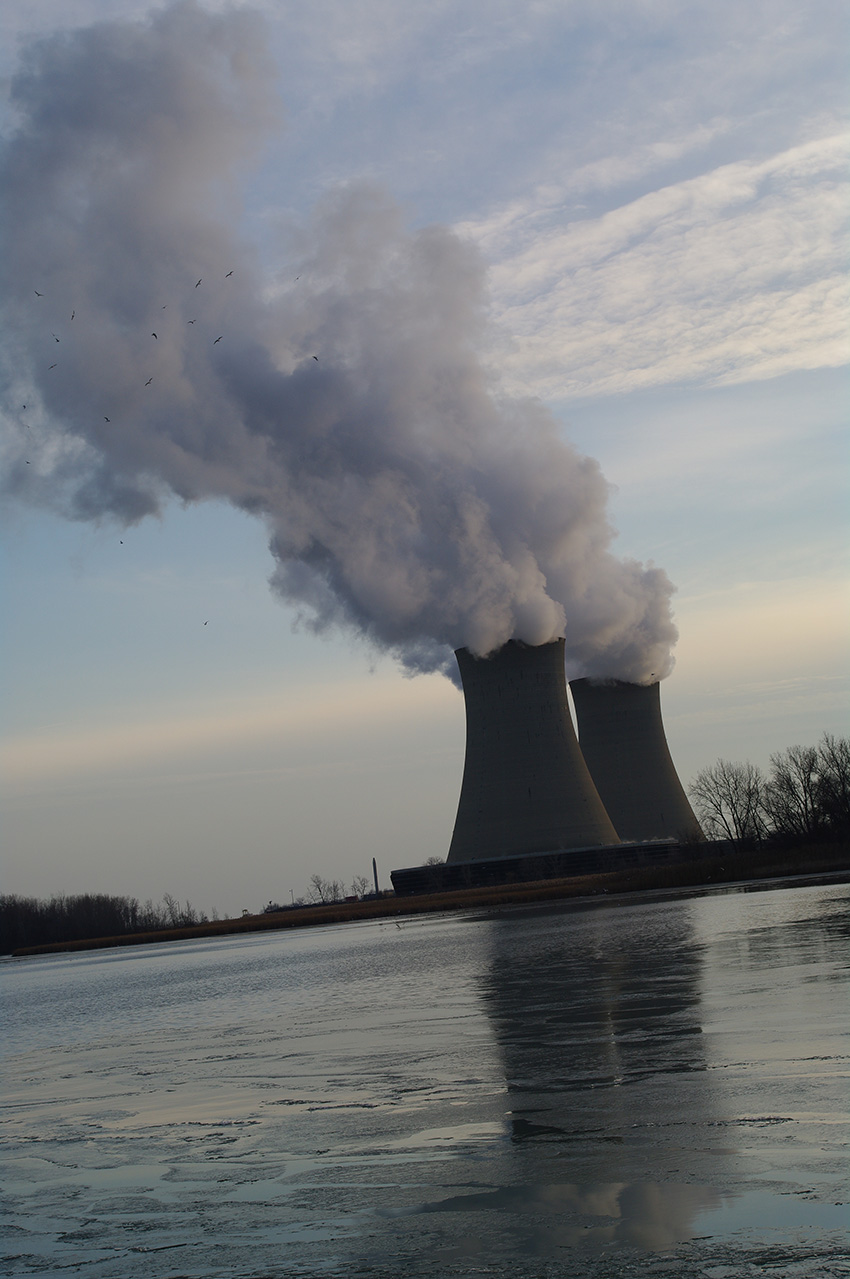Assessing How Renewables Affect Water Used for Thermoelectric Cooling
Model examines water-energy relationships at the regional level.

The Science
Water use and energy production are intrinsically linked. Most electric power plants in the United States generate electricity by means of a steam generator. After driving the turbines, the steam is condensed in a heat exchanger. This process, known as thermoelectric cooling, uses large quantities of water often withdrawn from rivers and lakes. Once cooled, the water is returned to a boiler, where it is again converted to steam to continue driving the turbines. The water withdrawn for these thermoelectric cooling systems makes up nearly half of all water withdrawals in the U.S. To assess how water use will be affected by potential shifts in the power sector—specifically changes in the mix of renewable energy sources—researchers supported by the U.S. Department of Energy have developed a new modeling tool. The model, called WiCTS (Withdrawal and Consumption for Thermoelectric Systems), estimates the amount of water used by a variety of electricity-generation technologies at the regional level.
The Impact
Results from this modeling study suggest that in some regions, the use of dry cooling technologies, though more expensive, may be beneficial in limiting water scarcity.
Summary
As part of the Massachusetts Institute of Technology (MIT) Joint Program on the Science and Policy of Global Change, researchers used WiCTS in a case study to evaluate changes in future water use caused by increased use of renewable technologies, such as wind, solar, geothermal, and nuclear. They found that at the national level, as the proportion of renewables in the electricity mix increases, water withdrawals decrease. At the state level, WiCTS’ ability to provide regional results reveals a more complex picture of future water use. For example, decreases in water withdrawals are concentrated in water-rich areas. However, in water-stressed areas, water withdrawals and consumption are more likely to increase with a switch to renewables. Coastal areas that rely on withdrawals of salt water for cooling will experience an overall decrease in water withdrawals but an increase in freshwater withdrawals.
Contact
Jonathan Baker
Harvard University
bakerjonathane@gmail.com
Funding
This research was funded by the National Renewable Energy Laboratory, the MIT Joint Program on the Science and Policy of Global Change, and the U.S. Department of Energy (grant no. DE-FG02-94ER61937).
Publications
Baker, J., et al. “Quantifying the impact of renewable energy futures on cooling water use.” J. Am. Water Res. Assoc. (JAWRA). (2014). [DOI: 10.1111/jawr.12188].
Highlight Categories
Performer: University



